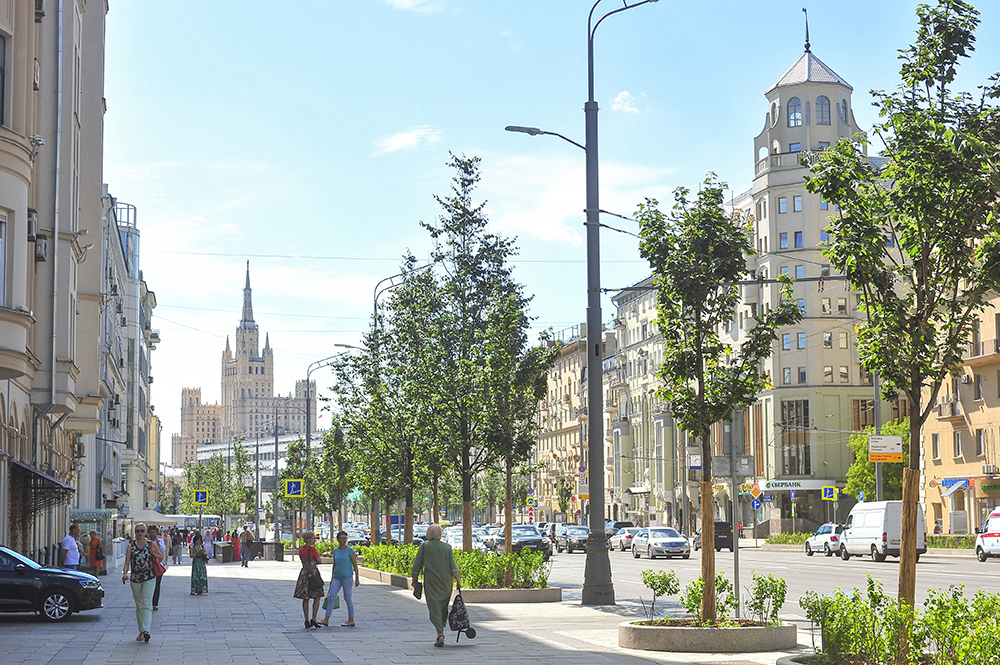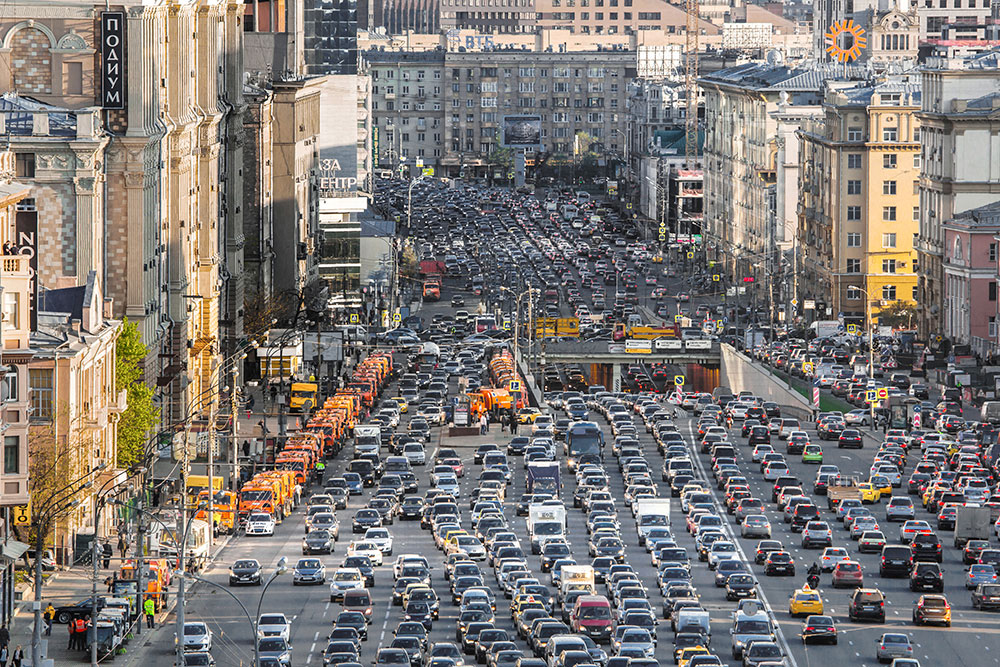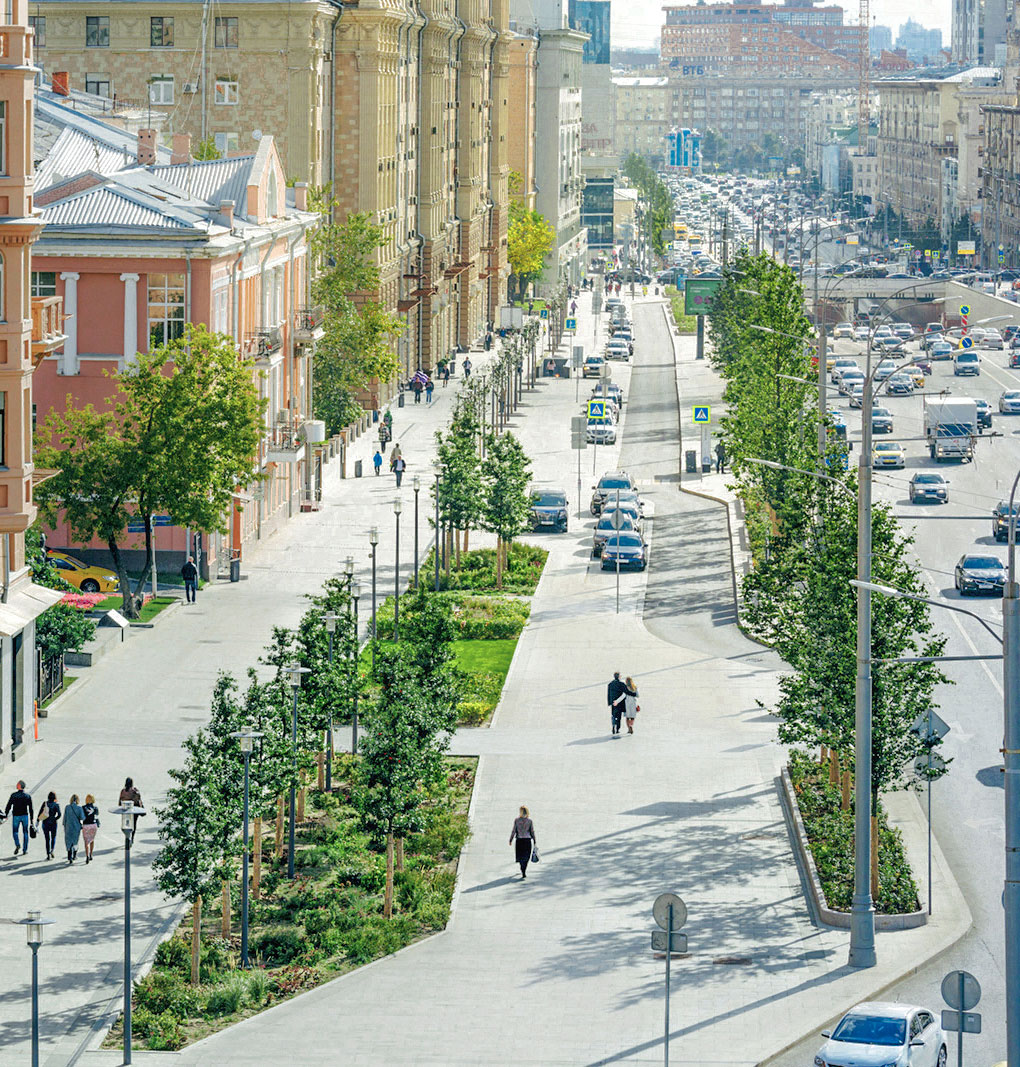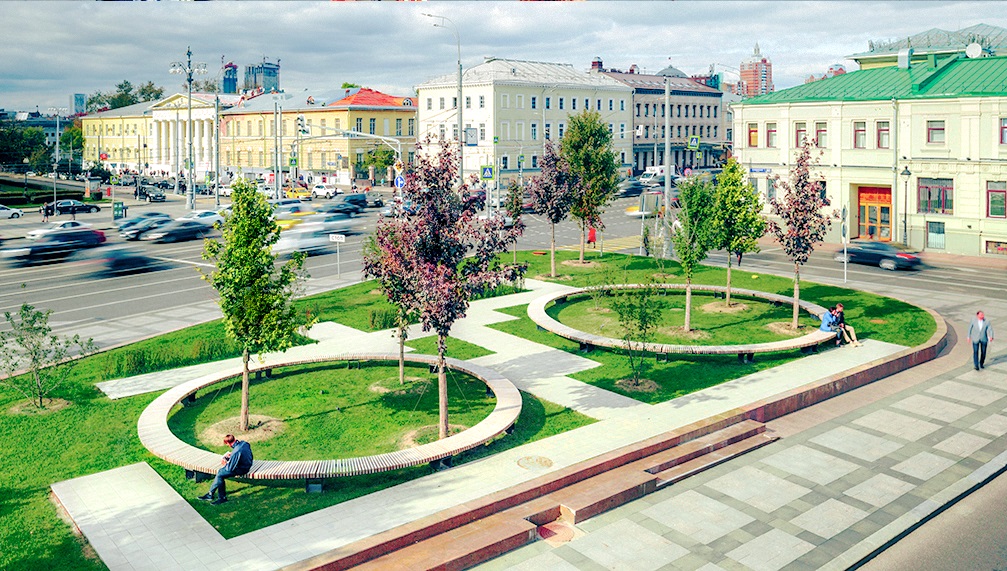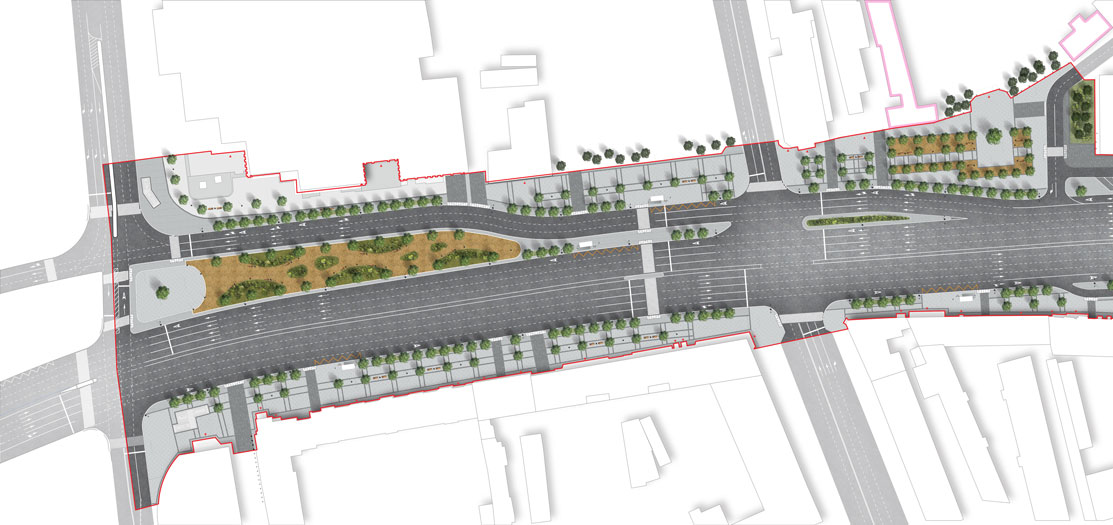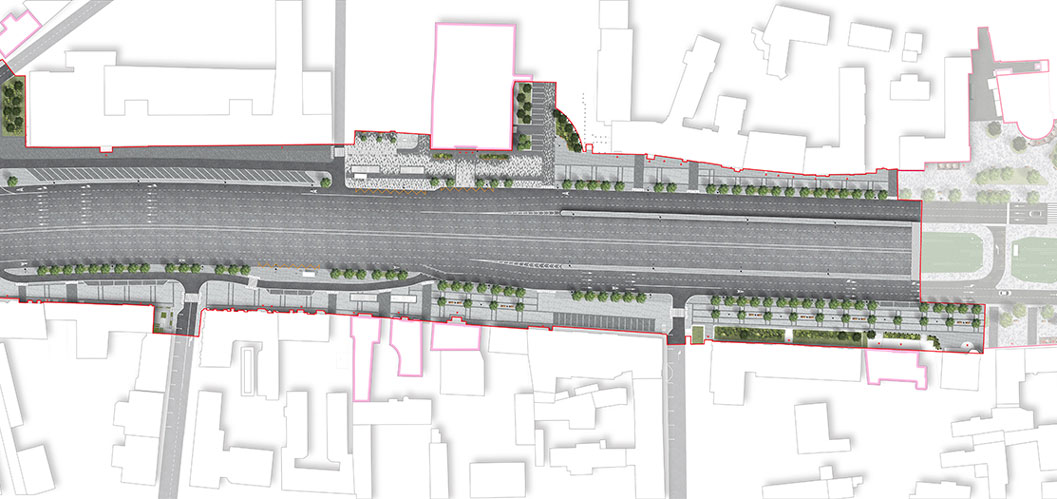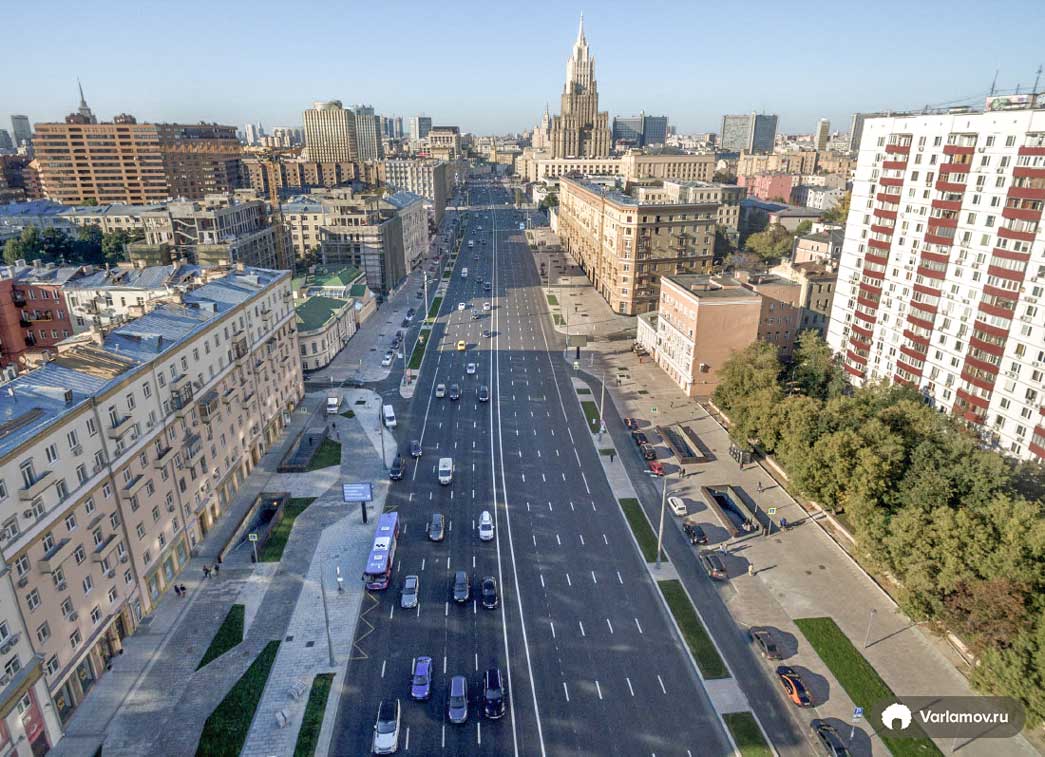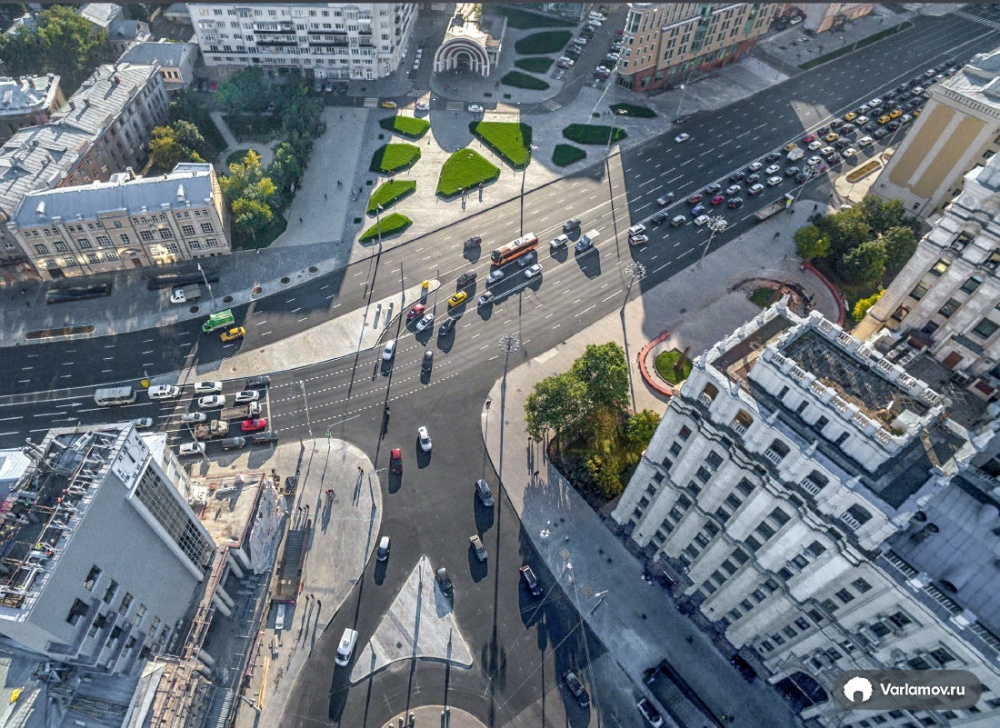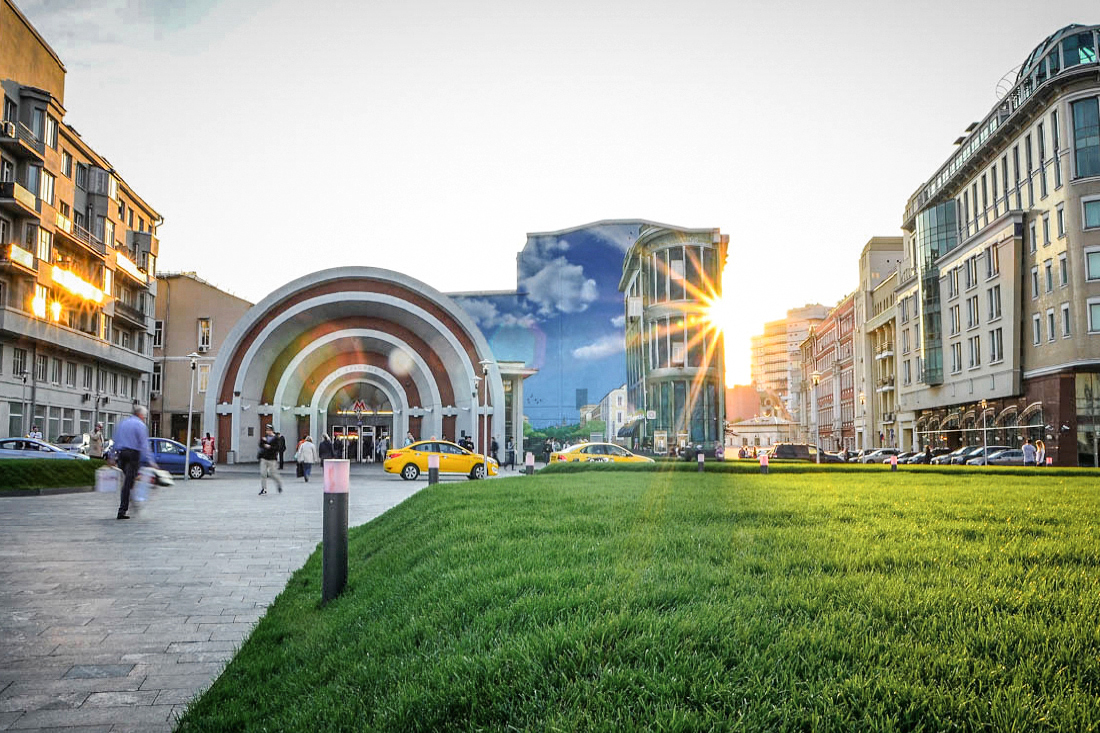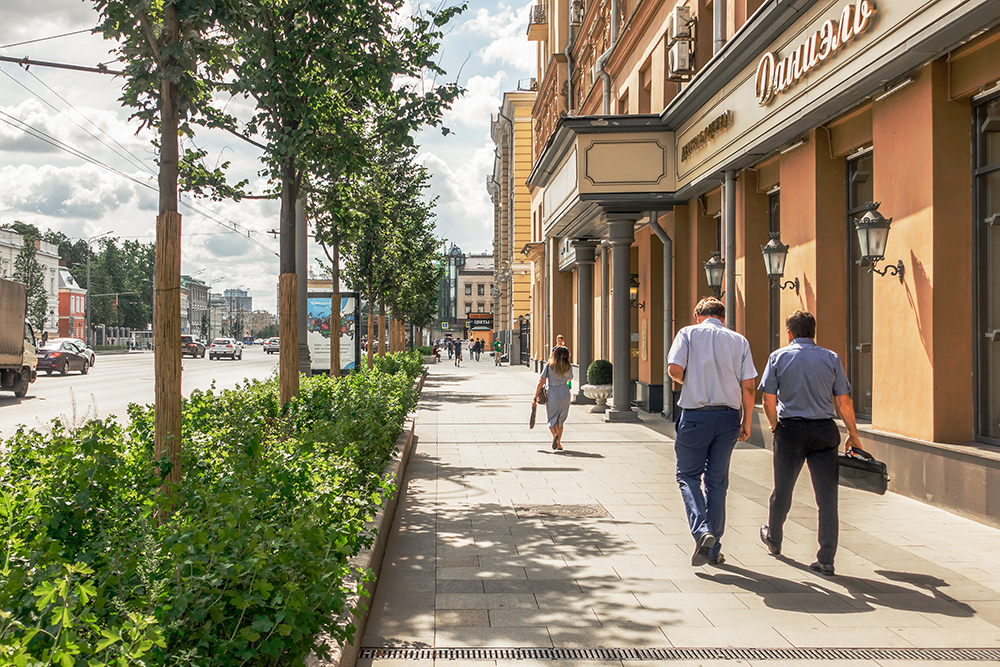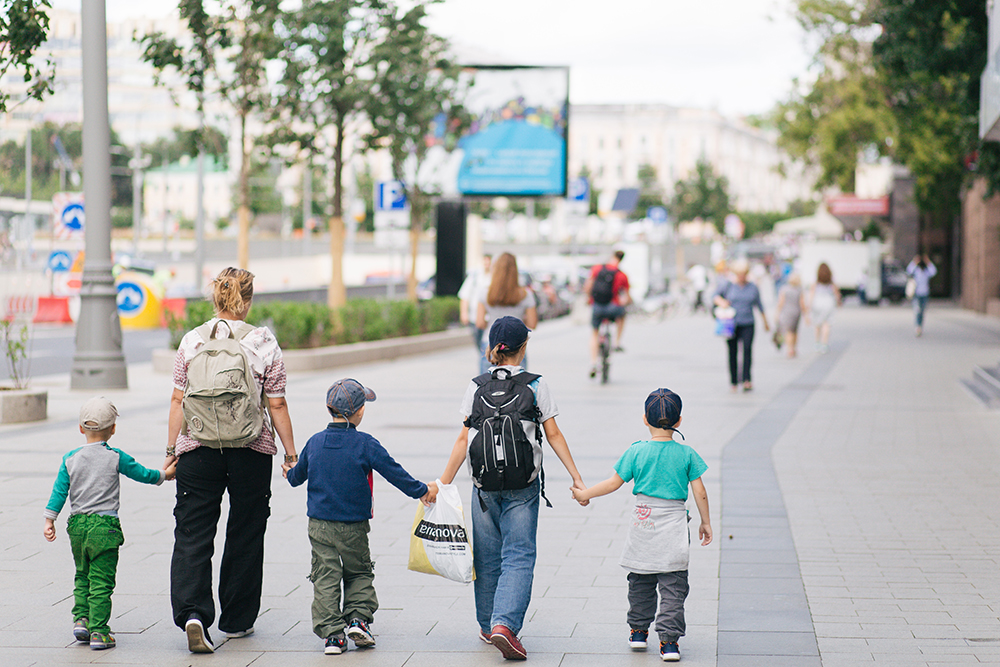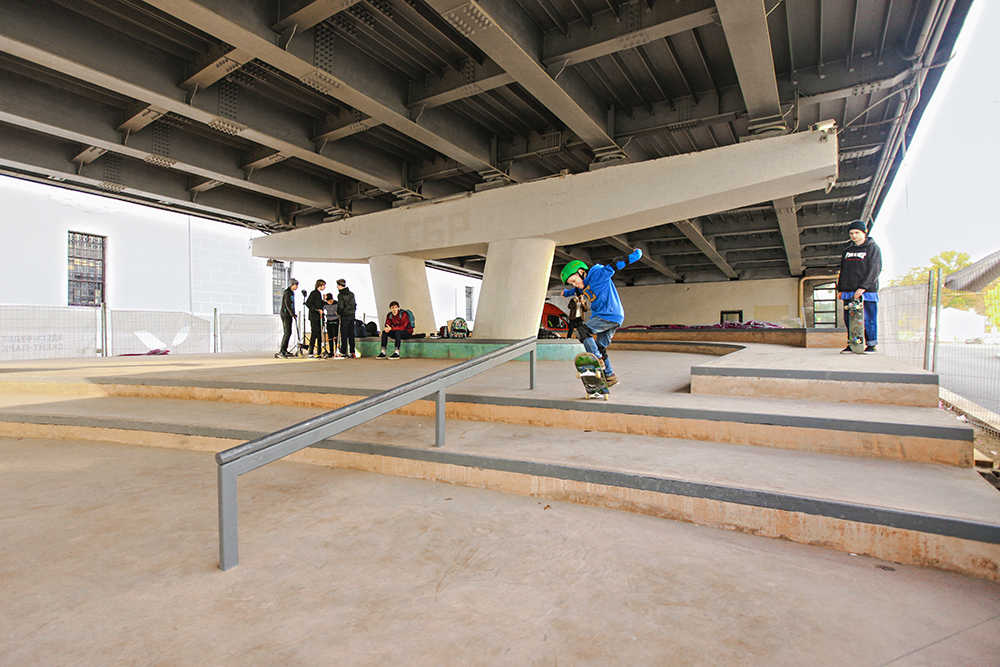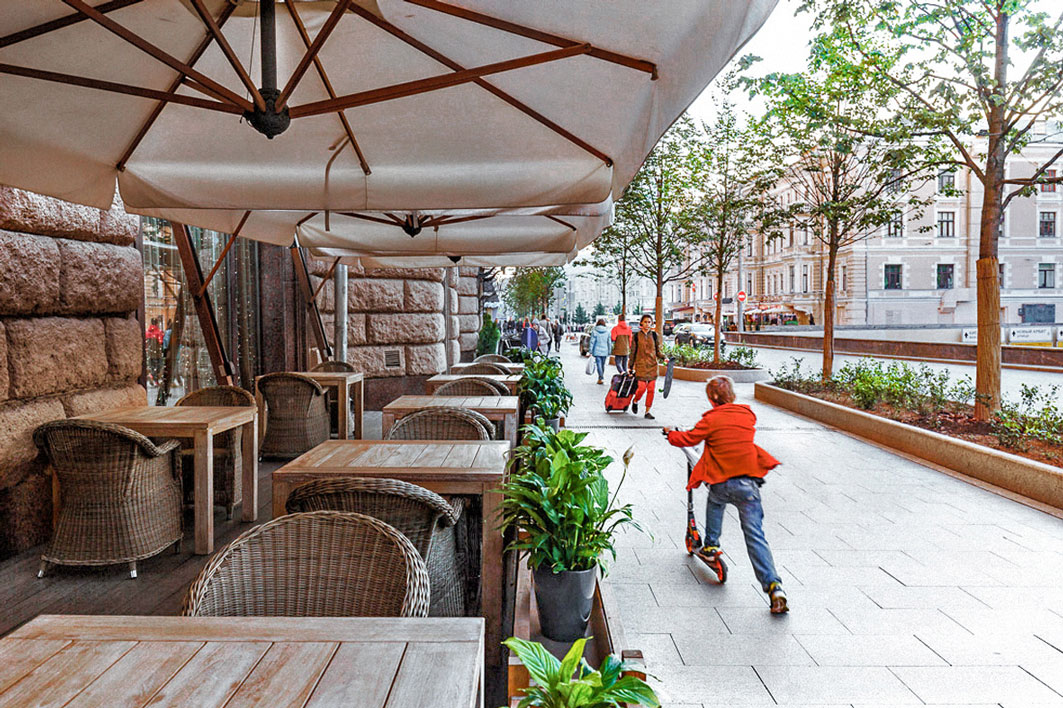Previous state
The broad, fifteen-kilometre-long, circular avenue running round the edge of the centre of Moscow occupies the space where the seventeenth-century city ramparts once stood. After the cataclysmic fire of 1812, by all accounts caused by retreating Russian troops after the city was occupied by Napoleon’s Grande Armée, the reconstruction of Moscow transformed the defensive ring into a road embellished with gardens. In the early years of the twentieth century, roadside residents were able to ornament it with parterres in front of their buildings, which led to its being called the Garden Ring. However, with Stalin’s Master Plan and the far-reaching overhaul of the city in the 1930s, the gardens were removed. This was the first step in a process which ended up by eliminating the tramway tracks and lining the now-narrow footpaths with trees, in order to give priority to cars. In the Soviet Union years, the former Garden Ring became a highway designed for large numbers of cars and with underground crossings for pedestrians, thus obliterating all visual references between the two sides. The Garden Ring had been turned into an aggressive environment as well as being the symbolic boundary of the division between the old centre and the peripheral areas of Moscow.Aim of the intervention
Coming under the auspices of the government’s urban renewal programme called “My Street”, which was initiated in 2014, the project aimed to change the existing situation of a dense, fourteen-lane highway with narrow footpaths—frequently used for parking—into a road worthy of a modern metropolis, and one that would value pedestrian-friendly public spaces as well as including an efficient public transport system. The guiding principle, which came to be known as the “100 Gardens of the Garden Ring”, was based on the desire to restore the legacy of historical qualities which had inspired the name that was originally given to the road. Bringing the gardens back to the ring road, planting trees, limiting road space to ten lanes, and restoring wide footpaths for pedestrians were the essential elements of the intervention. Moreover, this was a chance to reunite the two parts of the city, its centre and its periphery.Description
The project was designed by eighteen architects’ studios from around the world with the aim of bringing together internationally renowned stars, and young local architects. However the chief concern was to be open to the creativity of local talent with Strelka KB acting as the project’s intermediary as well as carrying out consultancy functions. In order to make the most of the diverse origins of the experts involved, the project was divided into several areas of activity, initially defined by Strelka Architects. Throughout the process of designing the ring road, key spaces were developed by both international and Russian architects. These spaces were chosen in keeping with their public uses, which had emerged, often spontaneously, prior to the renovation, and also with a view to enhancing the intensity of their newly acquired urban uses. Meanwhile, sections were identified for the various uses so that the full complex set of functions could be introduced along the entire length of the ring road, from public transport, private cars, parking spaces, pedestrian zones, as well as underground technical and service areas.Assessment
One undeniable aspect of this project is its huge impact in terms of urban extension: 111 hectares for creating thirteen new public spaces, introducing eight new lines of public transport, and highlighting the value of 196 historical elements. Twenty new crossroads have been created, and these have included plans for squares with a good presence of greenery, as is particularly the case with the Krasnye Vorota underground station. The intervention has managed to return to the road its former glory of the green boulevard and to offer a welcoming space for local residents and pedestrians. The new Garden Ring has begun to play an urban role of attracting a wide range of businesses. Banks and offices are ceding part of their ground-floor spaces to a considerable number of new shops. Large-scale tree planting has stabilised the climate bubble effect by minimising the amount of dust on the roadway and contributing by generating oxygen. Permeable paving with granite stones avoids flooding and improves drainage, while also reducing the consequences of urban heat island phenomena which are usually produced by asphalt. Finally, the return of the Garden Ring has made the historic centre of Moscow more accessible for all the city’s inhabitants.
Teresa Navas
[Last update: 11/12/2019]


